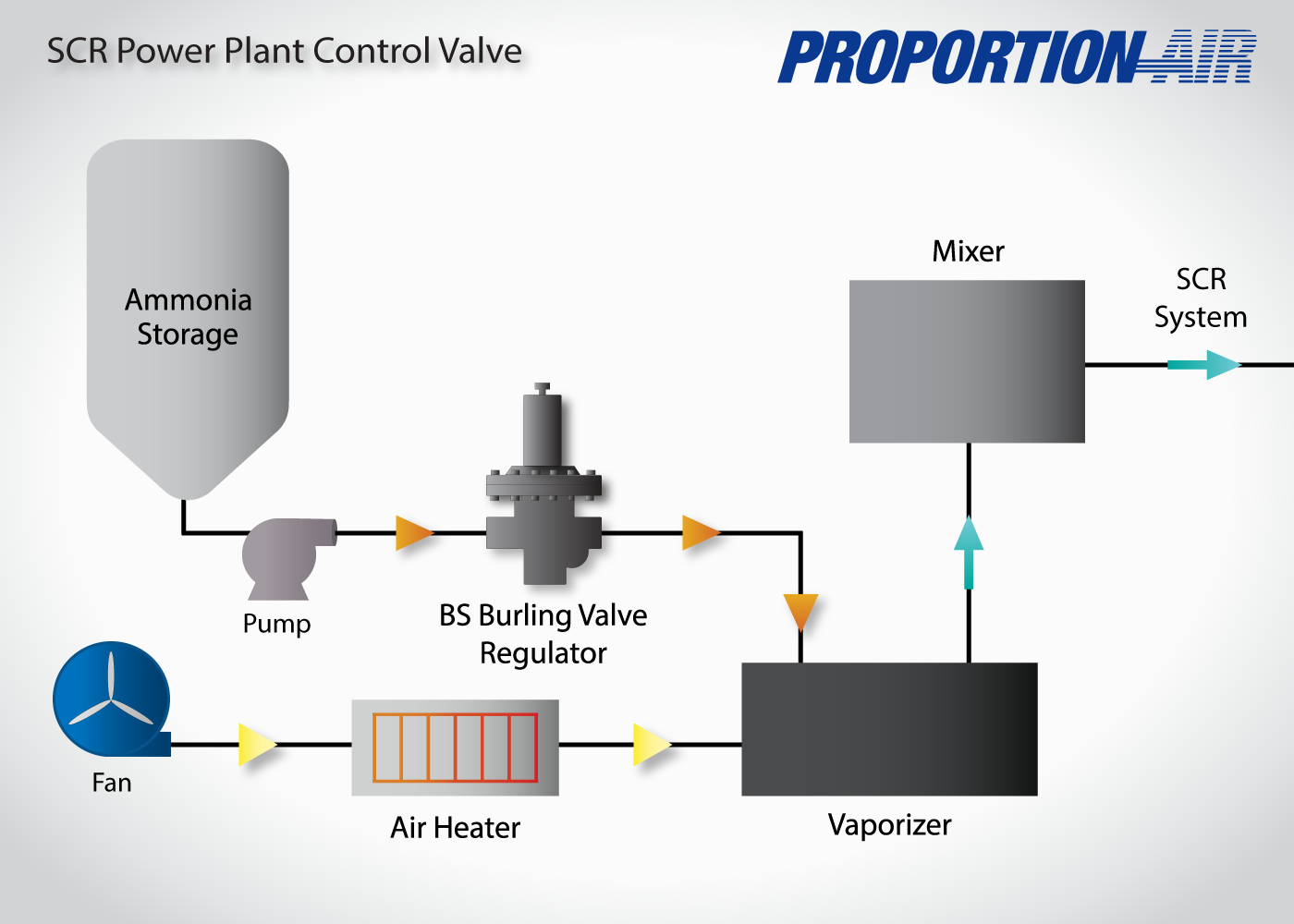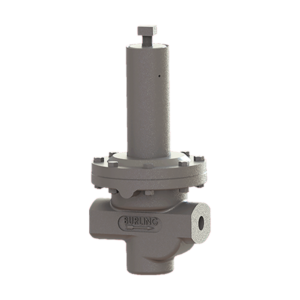
Controlling the pressure of ammonia can be challenging considering its caustic nature. But when it comes to reducing power plant emissions, the challenge must be met. A BS1 direct-acting pressure reducing regulator provides reliable and repeatable pressure control with ‘ammonia compatible’ components and easy inline maintenance features.
The Selective Catalytic Reduction Process
SCR (Selective Catalytic Reduction) is a process used by coal and gas burning power plants to reduce nitrogen oxide (NOx) emissions. Ammonia is injected and used as the reducing agent. SCR is a post-flue treatment that can reduce NOx by up to 95%. Essentially, the ammonia comes into contact with the NOx and turns it into nitrogen and water.
The BS regulator accurately controls the pressure of the ammonia during the injection process.
Selective Catalytic Reduction is regulated (and mandated) by the EPA. If the SCR system is not functioning and NOx is not being reduced, the EPA will fine the plant thousands of dollars per hour, until the system is back up and running.
Typical Requirements & Specifications for SCR Power Plant Control Valves used in Ammonia Service
-
Must be cleaned of greases and oils that may come into contact with the media (Oxygen Cleaned)
-
Typical Body Materials:
-
Carbon Steel and Stainless Steel (Preferred)
-
-
Recommended Seat/Seat Material: TFM1600, EPDM, PTFE and RTFE
-
Stainless Steel diaphragms are recommended.
Materials NOT Compatible with SCR Power Plant Control Valves used in Ammonia Service
-
Bronze, Cast Iron, Buna, Viton and Polyurethane

